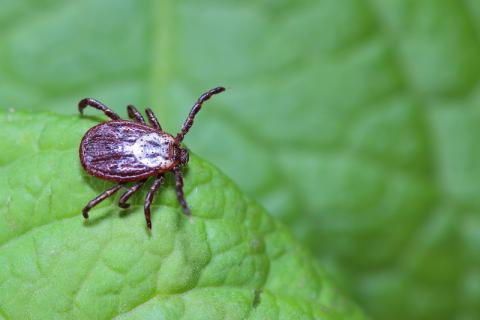Asian Longhorned Tick Confirmed in Union County
The Asian longhorned tick (ALT) is a menace to livestock, companion animals, wildlife, and humans. This invasive species can transmit a number of pathogens to humans and animals, uses animals for dispersal, and is an economic threat to the agricultural and livestock industries. As of July 31, 2019, the ALT is confirmed in Union county on canines, cattle, and deer. Unlike other North American ticks, this exotic and invasive tick has a one generation per year life cycle and can produce offspring without mating, which permits rapid population growth. A single female can lay between 2,000 and 4,000 eggs. It is very likely that this tick will become both a health and economic concern in Union County and the state of Tennessee. The goal of this project is to expand surveillance efforts for the Asian longhorned tick and to develop and assess prevention, detection, and response strategies and educational materials as a first-step in protecting livestock, wildlife, companion animals, and humans from this prolific pest.
We are asking for help with sample collection. Knowing the citizens and animals in a county may encounter many ticks in their daily activities, we would like your help in collecting tick specimens.
How to submit a sample:
1. If you find a tick(s), please put them in a clean, labeled zip lock bag. Please do not place any other debris in the bag with the tick.
2. Submit the specimen as quickly as possible to the UT Extension Union County Office
a. Our address is 3925 Maynardville Highway, Maynardville, TN 37807
b. Our business hours at 8 am to 5 pm Monday through Friday
c. After hours submissions can be arranged by calling 865-992-8038 during business hours.
3. The person receiving the submission should know for the date the tick was encountered, the address of where the tick was encountered, and the host the tick was found.
PROTECT YOURSELF AND OTHERS
Being outdoors puts you at risk of encountering many different tick species. Apply EPA-approved tick repellent to your skin (epa.gov/insect-repellents) and wear permethrin-treated clothing to avoid ticks. In heavily infested tick areas, it is advisable to use appropriately labeled permethrin products on clothing and shoes. When applying permethrin to clothing, it is important to ensure the product is dry before wearing permethrin-treated clothing. Always follow directions on the label.
Stick to the middle of trails and avoid dense brush. Ticks can be carried indoors on you, your clothing and your gear, so inspect yourself and clothing when finished with outdoor activities. Examine yourself and children for ticks, making sure to check where clothing fits tightly to the body (tops of socks, waistline, etc.), as well as hairlines, ears, underarms, belly buttons, arms, legs and all other areas of the skin. Place your worn clothing in a dryer for 10 minutes on high heat to kill any ticks prior to washing. Take a shower soon after returning indoors to remove crawling ticks and to repeat your tick inspection.
- Log in to post comments

